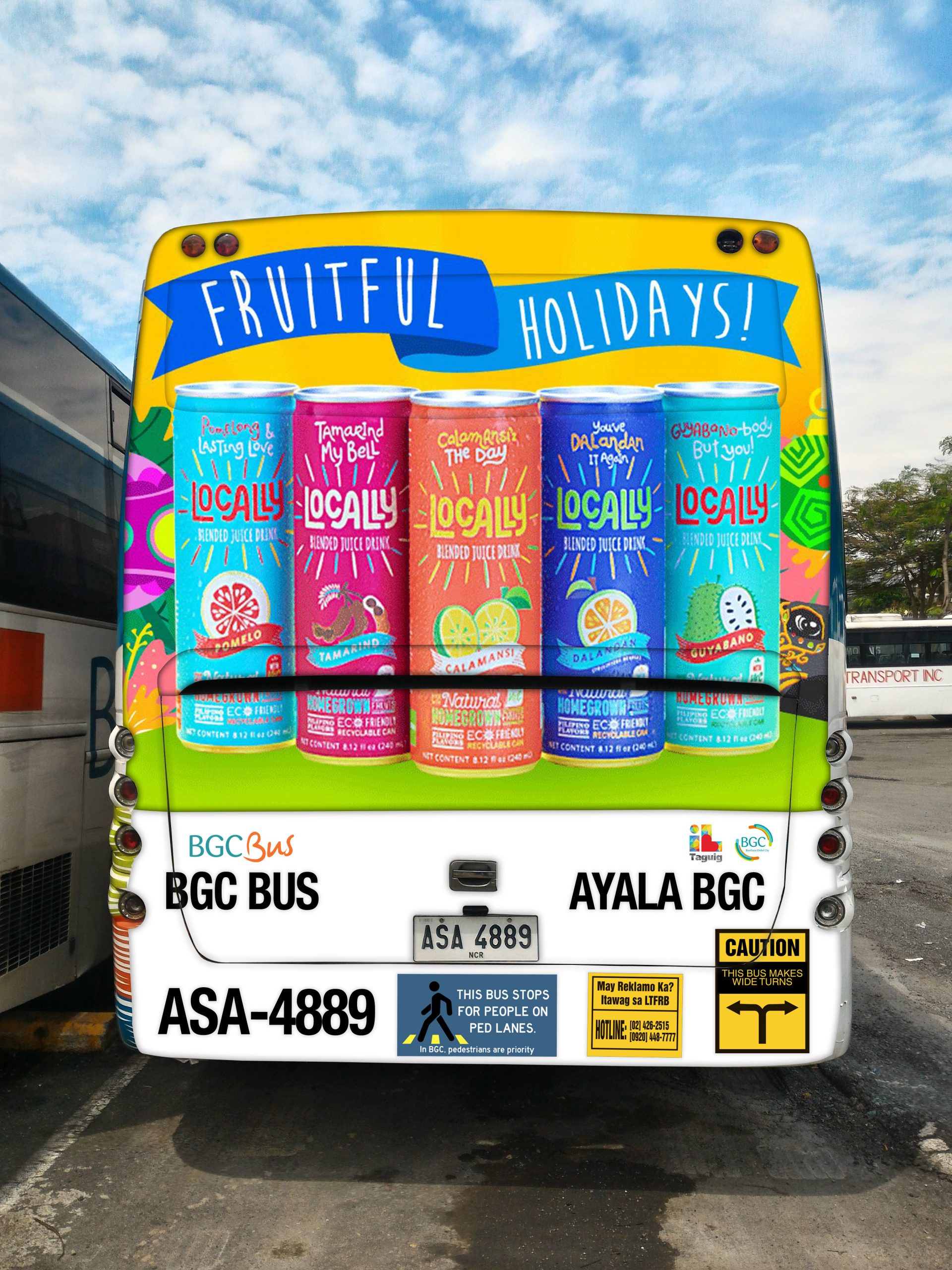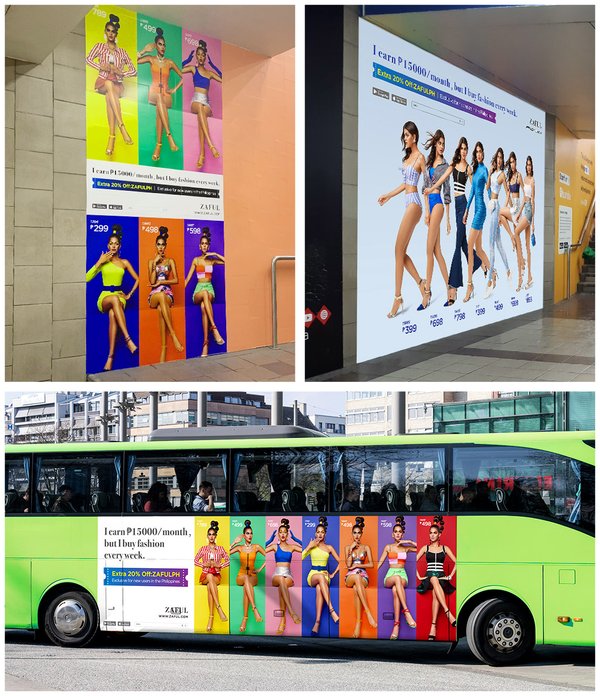Economical Transit Advertising Philippines for Brand Understanding
Economical Transit Advertising Philippines for Brand Understanding
Blog Article
Understanding the Function of Transportation Advertising in Enhancing Brand Name Visibility and Consumer Involvement
Transit marketing has actually emerged as a crucial aspect in the advertising and marketing landscape, offering special opportunities for brands to boost their visibility and engage customers effectively. With the capability to get to a restricted and varied target market during their day-to-day commutes, these advertising approaches are not simply concerning exposure; they have to do with creating significant links with potential clients. As we discover the diverse advantages and innovative techniques within transportation advertising, it becomes vital to think about how these elements jointly affect customer understanding and habits, elevating inquiries concerning their lasting influence on brand name commitment.
Interpretation of Transportation Advertising And Marketing
Transportation advertising and marketing describes the method of promoting products, services, or brand names via ads put in and around public transportation systems. This form of advertising and marketing incorporates a range of placements, consisting of posters on trains and buses, electronic screens at transit terminals, and wraps on the exterior of vehicles. It intends to get to a varied audience, taking advantage of the high foot traffic connected with public transit.
Transportation advertising is tactically positioned to capture the interest of commuters, that usually spend considerable time traveling or waiting. By incorporating promotions right into the everyday routines of people, brands can create a lasting impression and foster brand name recognition. The tool is especially efficient in metropolitan atmospheres, where public transport is a primary setting of traveling.
In addition, transportation advertising can help with local targeting, allowing organizations to reach particular demographics based on transit routes and terminal locations. As city populaces expand and using public transport rises, this advertising approach has obtained prestige as a crucial element of incorporated advertising and marketing methods. The dynamic nature of transportation marketing, incorporated with its ability to involve customers in a captive environment, emphasizes its significance in modern advertising methods.
Benefits of Transit Advertising And Marketing
The effectiveness of transit marketing depends on its capacity to supply a wide range of advantages to brand names looking for to boost presence and engagement. One of the primary advantages is the substantial reach it supplies; transportation advertisements can efficiently target diverse demographics across urban locations, getting to both pedestrians and commuters alike. This broad exposure significantly boosts brand understanding.
An additional benefit is the high frequency of perceptions. As transportation lorries follow recognized paths and quit at several areas, they produce recurring direct exposure that strengthens brand name messages. This frequency cultivates knowledge, which is critical in customer decision-making.
Transportation marketing is likewise economical compared to other media systems. Offered its extensive reach and capacity for high impressions, brand names often experience a reduced expense per thousand impacts (CPM), maximizing their marketing budget plan.
In addition, transportation ads can create a feeling of area link. By straightening with local transit systems, brands can reverberate with local target markets and promote a sense of local pride. This localized technique enhances brand name loyalty and interaction, making transit marketing a compelling selection for businesses aiming to solidify their presence on the market.

Reliable Methods for Transit Projects
To make best use of the impact of transportation campaigns, brand names must leverage strategic preparation and implementation tailored to their target market. Initially, recognizing the market features of the audience utilizing public transit is important. This allows brands to develop customized messaging that reverberates with potential clients.
Following, selecting the ideal transportation mediums is necessary. Whether utilizing bus wraps, train posters, or electronic screens, each medium has special benefits that can enhance exposure. For example, dynamic visuals on bus wraps can bring in attention, while digital ads can be upgraded regularly to reflect timely promotions.
In addition, integrating a cohesive branding method throughout transportation platforms guarantees uniformity and reinforces the brand's identity. Using unforgettable taglines and captivating layouts will certainly enhance brand name recall amongst travelers.
By employing these techniques, brands can effectively harness the potential of transit advertising, fostering better recognition and connection with their target audience. Ultimately, a well-executed transportation project can drive significant development in brand name exposure and consumer involvement.

Determining Impact and Engagement
In reviewing the efficiency of transportation ad campaign, exact measurement of effect and involvement is important for brand names seeking to maximize their advertising techniques. Metrics such as reach, regularity, and impacts give foundational data to assess presence. Evaluating these elements aids establish just how numerous prospective customers are revealed to the promotions throughout their day-to-day commutes.
Involvement can be more gauged via customer interactions, such as site traffic, social networks states, and direct reactions to calls-to-action included in the advertisements. Using tools like QR codes or unique URLs can help with monitoring of customer habits straight linked to transportation projects. Surveys and feedback systems also act as beneficial methods to collect qualitative information on customer assumptions and recall of the advertisement.
Additionally, progressed analytics and attribution designs can associate transportation exposure with succeeding investing in actions, using understandings right into the roi. By using a comprehensive strategy that combines qualitative and quantitative procedures, brand names can develop a nuanced understanding of their transit marketing influence. Inevitably, this data-driven method enables brand names to refine their projects, ensuring they resonate efficiently with target market and boost overall brand presence.
Case Studies of Effective Campaigns
Effective transportation advertising projects act as compelling instances of how reliable methods can raise brand name exposure and engagement. Transit Advertising Philippines. One noteworthy instance is the "I Love New york city" campaign, which transformed the city's picture and attracted numerous vacationers. By making use of metro ads, signboards, and bus wraps, the project created a strong, cohesive brand identity, leading to a substantial uptick in tourist and regional service patronage
One more exemplary project is Coca-Cola's "Share a Coke" effort, which leveraged transportation marketing to personalize the brand name experience. By featuring popular names on marketing products across different transportation platforms, Coca-Cola cultivated a deeper emotional link with customers, encouraging them to share their experiences on social networks.
In addition, the "Got Milk?" project successfully made use of public transport advertisements to reach a broad audience, reinforcing the message of the importance of milk in a well balanced diet regimen. The project saw a quantifiable increase in milk usage in target demographics.
These instance studies show that when implemented attentively, transportation advertising and marketing can significantly enhance brand presence, foster consumer engagement, and drive quantifiable outcomes, demonstrating its important role in modern marketing strategies. - Transit Advertising Philippines
Conclusion
In conclusion, transit directory advertising and marketing Source serves as an important tool for improving brand exposure and fostering consumer engagement. By utilizing purposefully positioned advertisements within mass transit systems, brand names can effectively get to diverse target markets and reinforce acknowledgment through regular exposure. The application of targeted messaging and ingenious strategies additionally intensifies the effect of transportation campaigns. Ultimately, the capacity to gauge interaction and analyze successful study underscores the efficiency of transportation advertising in driving brand loyalty and consumer communications.
Transportation marketing has arised as a critical component in the advertising landscape, offering special possibilities for brand names to boost their exposure and involve consumers effectively.In addition, transit marketing can facilitate local targeting, enabling organizations to reach specific demographics based on transit courses and terminal locations.In reviewing the performance of transit marketing campaigns, exact dimension of effect and involvement is necessary for brands looking for to enhance their marketing methods.Effective transit advertising and marketing campaigns offer as engaging examples of how efficient approaches can boost see it here brand name presence and involvement.In conclusion, transit advertising and marketing offers as an essential tool for boosting brand exposure and fostering consumer involvement.
Report this page